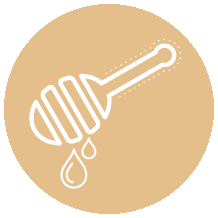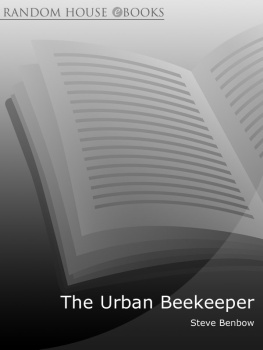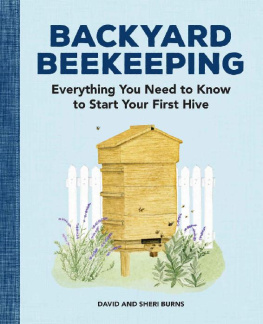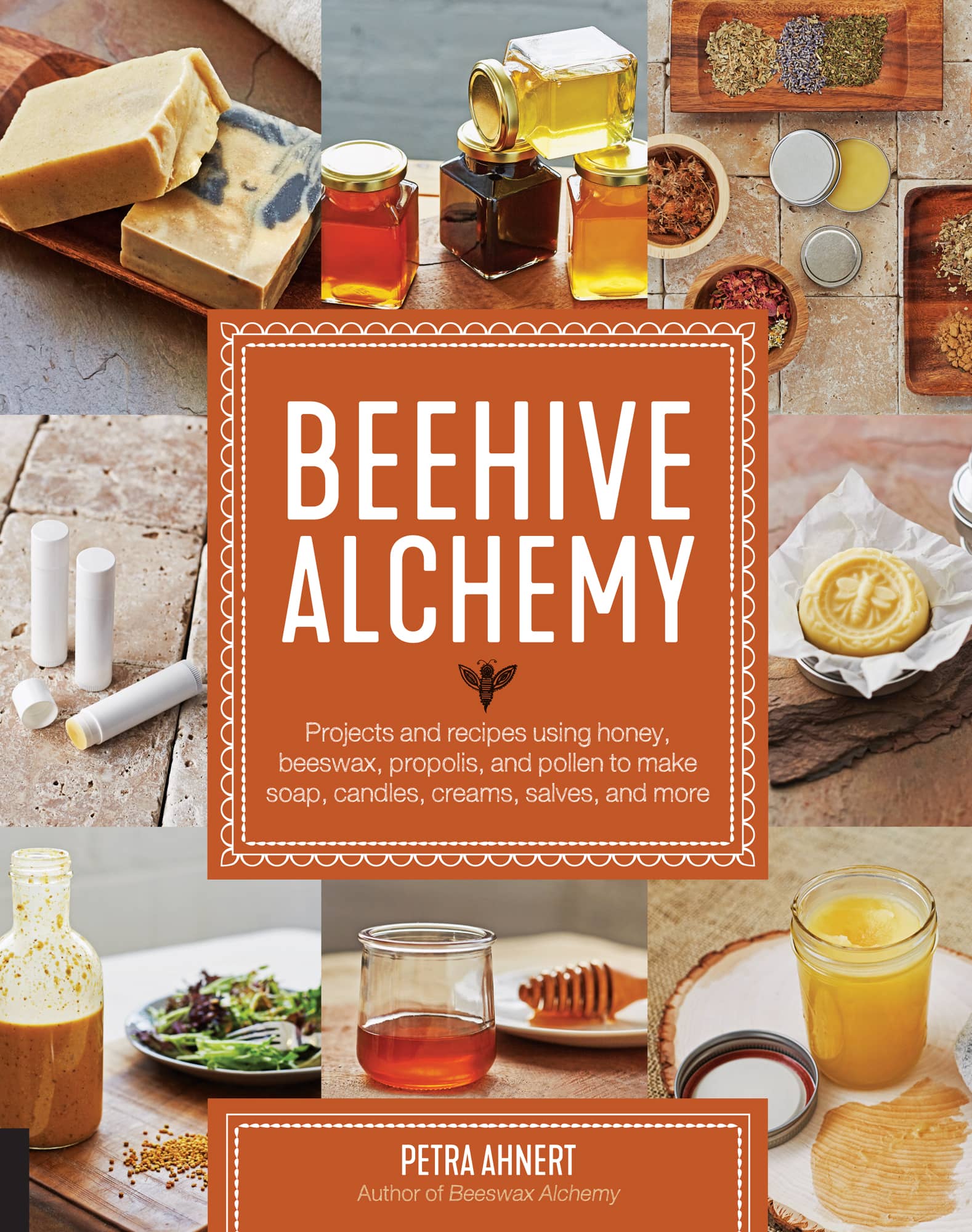INTRODUCTION
It was a chance meeting at the local library in 2004 that led my boyfriend Karl and I down the path to beekeeping. On that fateful day, Karl, who had long been fascinated with bees, met a beekeepers wife who needed help using the library printer. When Karl learned that her husband was a beekeeper, he asked if he ever needed help. She laughed and told him that he could always use a handmost people were afraid to work with bees. The next week, Karl was helping him, and by the end of the season, we were harvesting honey from our starter hive. Karl was hooked! The next year, we ramped up and got ten more colonieswe also learned that keeping them alive was not all that easy! But we did have some super yummy honey and some awesome white beeswax.
When Karl and I got our first hives and started working with bees, I knew nothing about bees or beekeeping. In my childhood, my mother and I would go to local farms to get eggs or produce, but we never purchased local honey. I am sure there were beekeepers in the area, but they werent part of my consciousness. The honey in the house was used medicinally, rather than as an everyday sweetener. We used sugar for all our sweetening needs. So, back in 2004, when we had honey after our first successful honey harvest, I had a lot of learning to do. I immersed myself in the bee world, reading all I could about raising them and using their honey and beeswax in my day-to-day life. At the time, I had no idea that this pantry staple, honey, would be the starting point to a whole new path in life.
Although I knew virtually nothing about bees, I did know a lot about Do-It-Yourself, or DIY as it has come to be known. My love affair with craft started back when I was a child. I am an only child born to German immigrants. My mother, who was trained as a kindergarten teacher in Germany, spent many years teaching in a German school in Peru. It was there that she was inspired to learn to make things by hand and from scratch. She was an excellent cook, accomplished seamstress, and avid gardener. Later, she took up weaving, pottery, and lapidary. She had a mantra that still echoes in my head today: You can make that! She was almost always right.
My father had the same do-it-yourself mindset. He was a machinist in Germany and the United States and later worked as an engineer. At home, he was always fixing or making something. In fact, he made much of the furniture in our home when I was growing up. I would often join him to help with his projects and learn about woodworking and mechanical things such as lawn mowers and cars.
Having such inventive parents definitely rubbed off on me, and Ive been a do-it-yourselfer all my life. One of my many creative pursuits, a two-year obsession with making soap, has resurfaced since we started keeping bees. Karl quickly discovered that he liked my handmade soaps more than commercially available soaps, so when we started selling our honey at local farmers markets, we decided to sell my soaps as well. I fine-tuned my recipe and peddled them along with our artisan honeys. It was a great match. With a surplus of beeswax, I started making other items such as lip balms, solid lotions, and salves. My new business, which I called Beehive Alchemy, was born.
Encouraged by the success of my products, I continued adding to my line with creams and lotions, perfumes, and candles. With each product addition, I acquired new ingredients and new knowledge. I also learned the value of experimentation. Following a recipe that comes out of a book or off the Internet can yield a good product, but what makes it good? Having a firm knowledge of the ingredients and why they are in the recipe is extremely important.
Spurred on by the popularity of Beehive Alchemy products, I decided to enter Martha Stewarts American Made competition in 2013. That last-minute decision gave my business exposure to new people and new markets. I also learned that bees were HOT! Everyone wanted my beeswax candles. This visibility also resulted in an offer to write my first book Beeswax Alchemy. I poured all my theoretical and practical knowledge of beeswax into those pages.
I never dreamed that four years later, I would be writing this book. My original visionto help small-scale beekeepers find creative uses for all the products the bees providehasnt changed. And, since beeswax is also a big part of this book, there is naturally going to be some overlap, after all, how many ways are there to dip a candle? But as I continue to refine existing products and introduce new ones, I have more knowledge and tips to share. Ive included those discoveries and refinements here.
What I love most about this book is the fact that it includes honey, the single most important thing we get from bees. It nourishes us, heals us, and makes most things taste better. Although honey can be used topically for healing and moisturization, it shines in food. During the countless hours I spent researching bees and finding uses for bee products, I came across many recipes that called for honey, which I shared with customers at farmers markets. Whenever people visiting our market stand set down a jar of honey, claiming that they didnt use much of it at home, I handed them the brochure and told them that they obviously needed new recipes. Im not sure if it worked on my customers, but it did work for me. With a constant supply of honey on hand, I was always looking for new ways to use it. Replacing sugar with honey in recipes was relatively easy, but I also made a point of learning new transformative ways to use all the bees products. Although this is not intended to be a cookbook, Ive included many of those recipes on the following pages.
CHAPTER 1
ALCHEMY IN THE BEEHIVE
People have had a relationship with bees for many millennia. For most of that time, it consisted of finding the bees in their natural habitat and harvesting the honeycomb. It wasnt until the 1500s that people built structures to house bees and not until the 1800s that moveable frame hives, similar to what are in use today, came to be. These frames allowed the keeper to manipulate the individual combs in a nondestructive way. The 1800s also saw the invention of the bee smoker, the comb foundation maker, and the honey extractor. Although there have been modifications over the years, all of these tools are still being used by todays beekeeper.
HONEY

What we see as the golden nectar of the gods in a jar is in fact made up of an array of different components.
Approximately 80 percent of honey is composed of water and the sugars fructose and glucose. The remaining 20 percent consists of vitamins, minerals, amino acids, enzymes, and polyphenols. The exact makeup of a particular jar of honey will vary significantly depending on the region and on which flowers the bees visited. The wide variations in honey are part of the reason scientists have spent decades researching honey, its constituents, and their effects on our bodies, but there is still a lot that remains a mystery.











